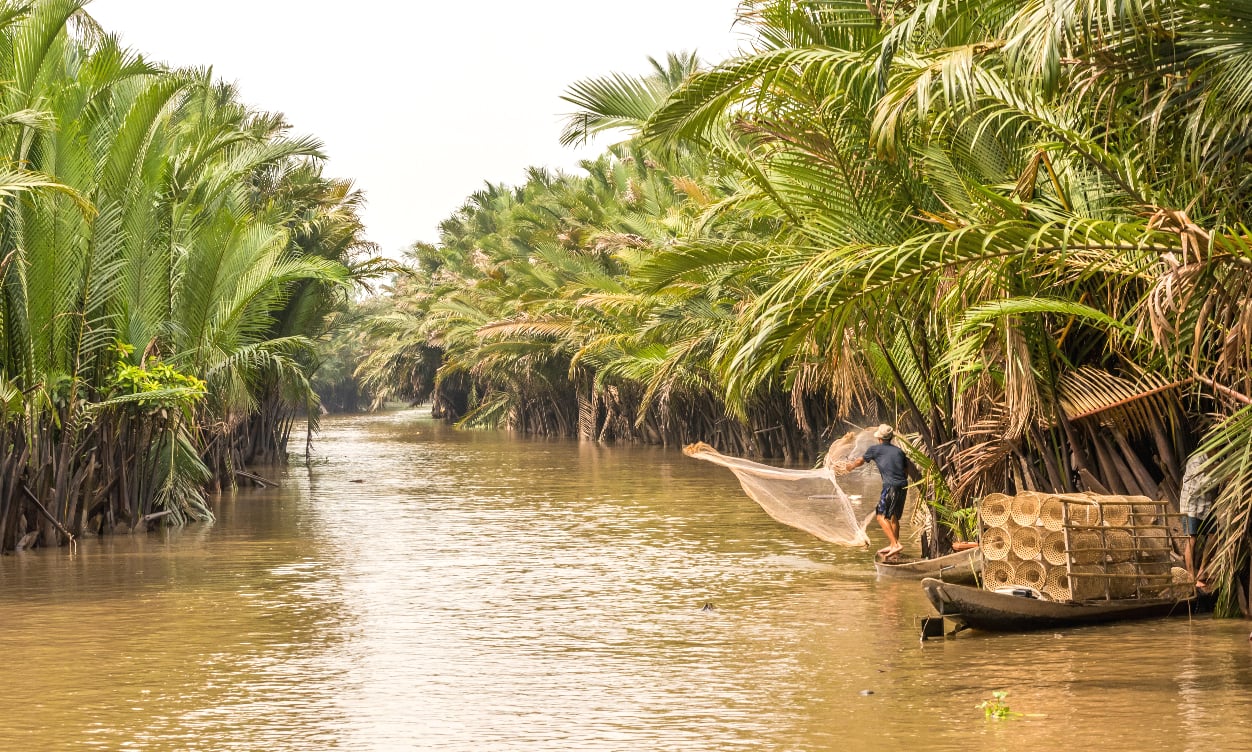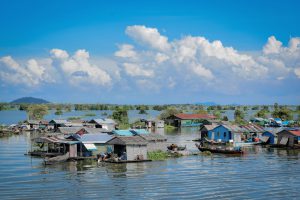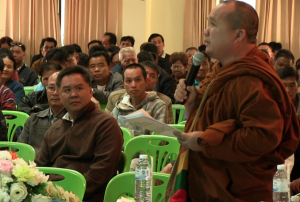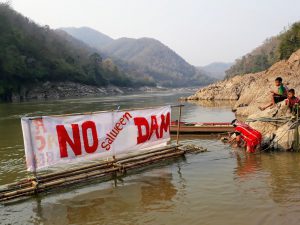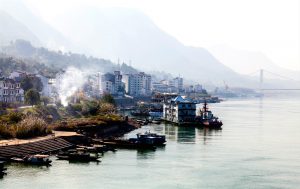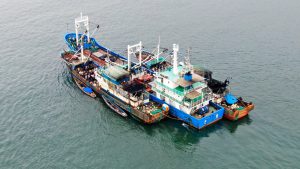An elderly fisherman anchored his small boat to the bank of the Mekong in north-eastern Thailand. Inside lay his morning catch of three fat barbs.
“We can catch plenty of fish,” said Thong-in Wenkham with a thin smile, “It’s easy for us when the water level is low like this.
“I can get up to 2,000 baht (US$65) for this catch. It’s a lot for a poor fisherman like me. But this is not happening every day.”
It was August in the district of Chiang Khan, the height of the rainy season. Yet the river’s level more closely resembled the dry season.
“Abnormal water levels are becoming quite normal, but this year’s extreme is frightening me because it’s troubling the migration of the fish upriver into the tributaries to reproduce,” Thong-in admitted.
The Mekong River Commission (MRC), an intergovernmental organisation set up to jointly manage water resources, confirmed that the water level in many stretches, including at Chiang Khan, Chiang Sean and Vientiane, had dropped below the historic rainy season low of 1992.
During the worst period in mid July, the water at Chiang Khan was four metres deep instead of the normal 11.
MRC put this down to low rainfall and a reduction in water being discharged from the Jinghong Dam in China’s Yunnan province, as scheduled maintenance work took place in July. Estimates of the amount of river water that reaches Chiang Khan via the dam vary from 10 to 30% of the total. Determining what proportion of the historic low is due to the drought and what proportion the dam is extremely difficult.
Migratory fish species at risk of extinction
Robert Mather, former head of IUCN Southeast Asia, identified the impacts of the Xayaburi dam on the lower Mekong in Laos as another factor contributing to the drought. It is expected to begin commercial operations in October.
Eleven hydropower dams already operate on the upper Mekong (which is known as the Lancang in China).
Dams raise the Mekong in the dry season and lower it in the rainy one, so as to generate electricity and facilitate riverine trade.
Robert Mather said: “Climate change is making rainfall less predictable and is also responsible for the Mekong’s record-low level this August. The combined impacts of hydropower dams and climate change is posing serious danger to the biodiversity of the river and food security of the people. The environmental pressures are growing too heavy for many species of endemic flora and fauna.”
Life in the Mekong basin has evolved along with the seasonal rhythm of the river. For instance, when the river bursts its banks in the rainy season the fish know to migrate upriver to reproduce in the flooded forest. When the water recedes in the dry season, many bird species nest on the exposed sand dunes and rocky outcrops.
Mather stressed that those species which cannot adapt to the radical environmental changes will go extinct.
It is estimated that the Mekong is the natural habitat of more than 850 species of fish, and around 135 species are migratory and thus seriously endangered by the hydropower dams.
Livelihoods threatened
Declining fish populations threatens the livelihood of the 70 million people who depend on the bountiful resources of the river, emphasised Chainarong Setthachua of Mahasarakham University.
“The local communities along the Mekong, in four countries, especially the poor and landless people, rely heavily on the river,” Chainarong said.
“They get cheap protein from the fish and can sell it or trade it for rice and other essential goods. So even the poorest families can get by.”
Source: Food and Agriculture Organisation
Mekong fish are not just important locally, Chainarong said. The trade creates jobs and boosts the regional economy, supporting restaurants, tourism and logistics companies.
He stressed that by pursuing large-scale hydropower on the Mekong and its tributaries, countries in the region will end up destroying the healthy riverine ecosystems that are a lifeline to the majority of local people, for the benefit of a few rich investors and bureaucrats.
“This kind of development is not only unsustainable, but socially unjust, as it diverts the resources and wealth from the majority of citizens into the pockets of a few rich elites and powerful transnational corporations,” he said.
Many hydropower dam projects are proceeding in Laos, including at Don Sahong, Pak Beng, Pak Lai and Luang Prabang, with money and expertise from companies based in Thailand, China, Malaysia and South Korea.
Chainarong stressed that environmental damage and biodiversity loss in the Mekong will force local people to rely on products from large food companies.
Moreover, the lives of millions of people, especially the poor and landless, will take a turn for the worse, as they will have to look for other jobs. Many will have to migrate to the city to become labourers, and possible targets for human traffickers.
More data-sharing
As the Mekong reached its historic low, Somkiat Prajumwong, secretary general of the Office of National Water Resources, disclosed that the office had already expressed Thailand’s concern to China and Laos about the impacts of the hydropower dams.
China’s foreign minister, Wang Yi, had told the ASEAN summit in Bangkok earlier in August that China had also been affected by the drought.
“Taking into account the needs of the countries along the lower reaches, the Chinese side has overcome its own difficulties and taken the initiative to increase releasing of water downstream at an amount exceeding the normal level,” Wang Yi said.
Yang Yang, a spokesperson for the Chinese embassy in Bangkok, also insisted that the water problems in the Mekong region are a result of climate change and that dams on the Lancang river are actually providing effective measures against flood and drought.
“Through scientific regulation, the average outflow of the Lancang in the dry season could be 70% higher than that under natural conditions, and in the wet season 30% lower… reducing effectively economic losses caused by the abnormal fluctuation of water level of the Mekong to the riverine communities,” Yang Yang said.
She also gave assurance that China is already sharing hydrological data with the downstream Mekong countries through both the Mekong River Commission and the Lancang-Mekong Water Resources Cooperation.
However, Carl Middleton, professor at Chulalongkorn University’s Center for Social Development Studies, insisted that mitigating the low-water crisis must involve more comprehensive data-sharing between governments and with the public, clear rules and procedures on emergency water release, and genuine public participation on Mekong development projects.
Middleton pointed out that the recent crisis showed that regional cooperation by the six countries that share the Mekong on hydrological data sharing and water regulation is still limited.
“It is clear that even deeper intergovernmental cooperation is required to build a fair, rules-based Lancang-Mekong water sharing approach,” he said.
He concluded that despite MRC having some limitations and weaknesses, it is still a good starting point for fostering meaningful intergovernmental cooperation to ensure the sustainable use and fair sharing of the Mekong’s natural resources.
